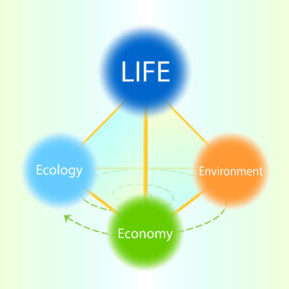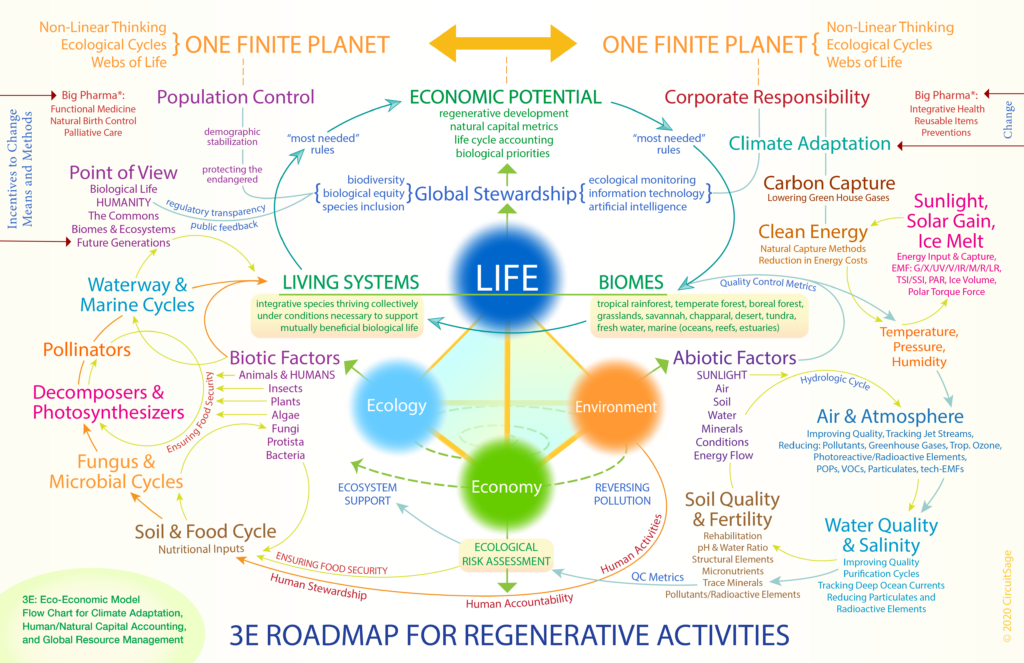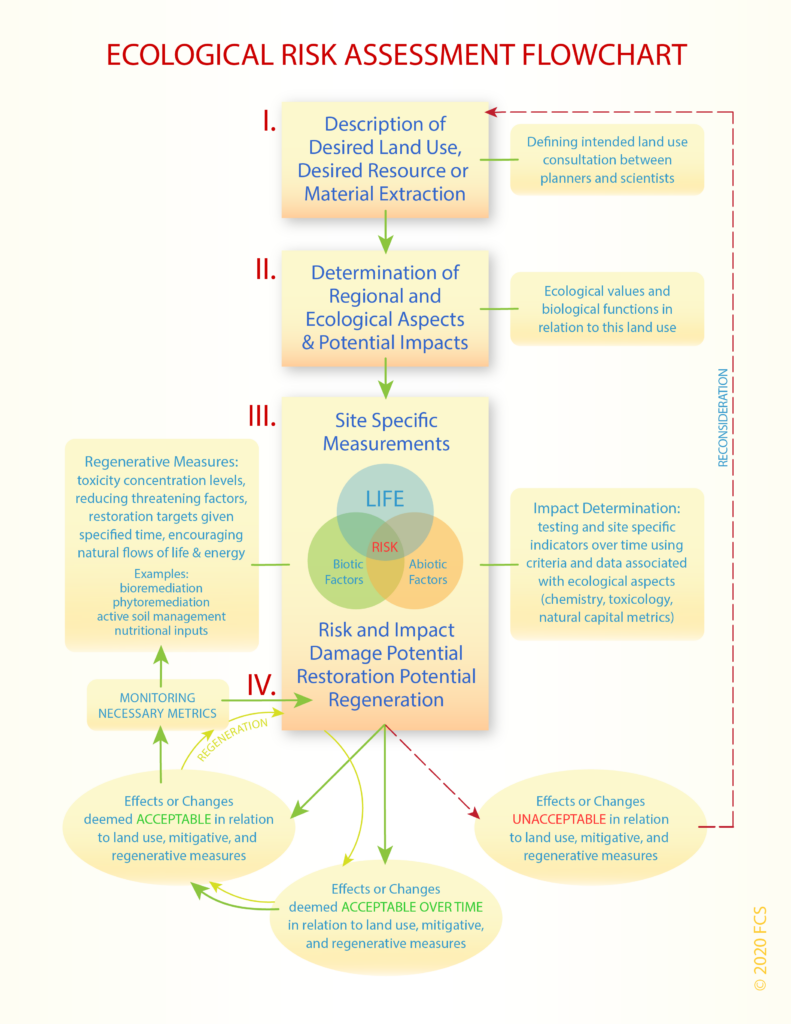The 3 Currencies
3E: Environment + Ecology + Economy
What if we had a global accounting system
that supports LIFE itself?

Global Currencies of Exchange
The flow of our currencies is similar to the ebb and flow of tides. One major shortcoming of our current method of exchange is simply a matter of relevance. Our present application of money is tied to petroleum reserves and other scarce resources. This approach does not adequately value the Earth and all life upon it as a whole. Our need for energy production should not outweigh the need for a clean, healthy biosphere to support life now and in the future. One might argue the emergence of pandemics is one consequence of the imbalances created by global pollution.
We only have one planet. Every act of consumption represents an impact on the Earth and its intricate and interconnected ecosystems. We need to embrace the value of living systems, and tie that value into systems of global governance. If our goals for exchange were rooted in regenerative development with cradle to cradle methods of manufacturing and production, we would have a method for ensuring the protection and restoration of all habitats. In order to embrace an effective approach to climate change adaptation we must leave behind our notions of post-industrial consumerism in favor of economies that are based upon regenerative practices and ingenuity.
NATURAL and BIOLOGICAL CAPITAL + HUMAN CAPITAL → ENSURE LIFE
The health and well-being of our planet is paramount. Each of us has a right to clean air, water, food, housing, and habitats. Consumerism, agriculture, industry, manufacturing, and settlements must account for impacts of development and requisite mitigation of those impacts. The result of which should be a thriving, biodynamic, harmonious planet - which is the bottom line.
REGENERATIVE DEVELOPMENT meets the growing needs of the future without compromising the ability of present generations to meet their own needs. Ecosystems & symbiotic species must be equally considered. Human activities must ensure the restoration of the natural world, the result of which adds value toward planetary biodiversity, natural capital creation and resource stewardship. Economic exchange must reflect full accounting for human activities from beginning to end of resource management. Because it is impossible to separate environment from living matter within ecosystems, all harvesting of raw material for economic activity must be performed in tandem with rehabilitation efforts in order to restore the natural balance of the ecosystem, ensuring the life and biodiversity of species within that ecosystem for generations to come.
Locally Sourced Energy:
Solar capture, wind, waves,
geothermal, perpetual motion
Locally sourced energy should be readily available and FREE or minimally taxed for capture & conversion infrastructure
Successful Renewable Solutions
International Energy Agency
https://www.iea.org/topics/renewables
Costa Rica
https://citizentruth.org/costa-rica-breaks-own-record-goes-300-days-using-renewable-energy-alone
Netherlands
https://www.government.nl/topics/renewable-energy
Sweden
https://sweden.se/society/energy-use-in-sweden
Switzerland
https://lenews.ch/2018/04/05/62-of-electricity-consumed-in-switzerland-from-renewable-sources
United Kingdom
https://www.carbonbrief.org/six-charts-show-mixed-progress-for-uk-renewables


Eco-Economic Accountability
3E: Environment + Ecology + Economy = Life and Biodiversity
ENVIRONMENTAL METRICS
Everything in the natural environment that is not human-made; such as air, water, landscapes and biomes comprising the natural environment.
ABIOTIC FACTORS:
Sunlight, Air, Water, Soil, Minerals, Conditions, Energy Flow
Sunlight, Solar Gain, Ice Melt, Solar Energy Input and Energy Capture
- EMF: Gamma, X, UV, Visual, Infrared, Micro, Radio, Long Radio
- Total (TSI) and Spectral (SSI) Solar Irradiance
- Photosynthetically Active Radiation (PAR)
- Polar Ice Volume and Melt Rate
- Polar Vortices and Torque Force that regulate air and water currents
- Following the Hydrologic Cycle
Temperature, Pressure and Humidity
Air and Atmosphere
- Improving Overall Quality
- Tracking Jet Streams
- Reducing: Pollutants, Green House Gases, Tropospheric Ozone
- Reducing: Photo/ Radioactive Elements, Particulates, tech EMFs (ElectroSmog)
- Reducing: Pollutants (POPs) and Volatile Compounds (VOCs)
- Following the Hydrologic Cycle
Water Quality and Salinity
- Improving Overall Quality
- Salinity and Purification Cycles
- Tracking Deep Ocean Currents
- Following the Hydrologic Cycle
- Reducing: Particulates, Micro-Plastics and Radioactive Elements
Soil Quality and Fertility
- pH and Water Ratio
- Structural Elements: Carbon, Oxygen, Water
- Primary Nutrients: Nitrogen, Phosphorus, Potassium
- Secondary Nutrients: Calcium, Magnesium, Sulphur
- Micronutrients and Trace Minerals
- Persistent Organic Pollutants (POPs)
- Volatile Organic Compounds (VOCs) production/emission factors
- Heavy Metals, Mineral Oils, Soil Contaminants
- Radioactive Elements
- Rehabilitation Efforts to Ensure Food Security
ECOLOGICAL METRICS
Natural processes influencing distribution and abundance of organisms, interactions among organisms, interactions between organisms, transformation and flux of energy and matter.
BIOTIC FACTORS:
Animals and Humans, Insects, Plants, Algae, Fungi, Protista, Bacteria
- Soil and Food Cycle (nutritional inputs)
- Fungus and Microbial Cycles
- Decomposers and Photo-Synthesizers
- Tracking Pollinators
- Waterway and Marine Cycles
- Ensuring Food Security
ECONOMIC METRICS (All of Human Activity)
- Corporate Responsibility
- Climate Adaptation starts here coupled with Resource Management
- Carbon Production and Capture Methods
- Clean Energy Production
- Resource Monitoring for Quality Control with IT and AI
- Pollution Mitigation
- Land Stewardship
- Protecting the Endangered
- Population Control (Based on Resource Availability)
- Addressing Poverty and Food Insecurity
- Demographic Stabilization
- Ensuring Equal Opportunity
- Preserving the Commons for Future Generations
- Child Care, Elder Care, Health and Palliative Care
- Community Support Services (food, water, shelter, education, opportunity)
- Frequent Public Feedback (weekly polls, monthly voting on local issues)
- “Most Needed” Rules for Resource Management
- Biological Prioritization
- Ensuring Biodiversity
- Regulatory Transparency
- Regenerative Development Methods
- Life Cycle Accounting in Product Design
- Ensuring Resources for Future Generations
- Following the Natural Webs of Life & Ecological Cycles
- Preserving the Commons
- Global Leadership and Solidarity

Tools & Metrics
Cradle to Cradle Centre
http://www.c2c-centre.com
Global Footprint Network
https://www.footprintnetwork.org
Green Economy Coalition
https://www.greeneconomycoalition.org
Natural Capital Coalition
https://naturalcapitalcoalition.org
UK Natural Capital Mapping
https://eip.ceh.ac.uk/naturalengland-ncmaps
UN Environment
https://www.unenvironment.org
UN Environmental Economic Accounting
https://seea.un.org
